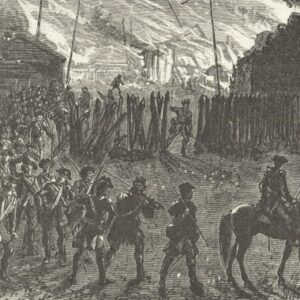
MEXICO — One of the most evolved vegetables in the world is what we now call corn. The roots of corn lay deep within the indigenous soil of Central America.
But the road towards the sweet, beautifully even rows of yellow kernels that we enjoy so much every summer has humble beginnings, in a small wheat-like plant known as teosinte.
Its evolution was very rapid once indigenous farmers of Mexico found a way to improve its size, taste and yield — simply by separating certain kernels from the small and potatoey tasting teosinte kernels that looked healthier or bigger than the rest. Those seeds were not consumed but replanted. What they discovered in the next harvest was a slightly bigger, taster and easier to grind and cook next generation. Continuing that same practice over several generations resulted in changes in appearance, colour, sweetness and a softer kernel shell which was tastier and easier to cook. Further selective breeding experiments since then have evolved the Maize into today’s modern corn.
An ear of teosinte is about three inches long with a single row of hard shelled seeds with about 5-12 kernels each.
More recent studies over the past 100 years or so, however, have concluded the sudden appearance of Maize was due to the application of indigenous knowledge through the intimate observations of nature.
According to “A Doctoral Document” presented by Jon Derek Pruittto the faculty of The College of Agricultural Sciences and Natural Resources for his Degree of Doctor of Plant Health, Nebraska, Mezo-American farmers discovered the changes in the taste, size, yield and appearance of the next generation’s crop was much improved, even over the previous generation, and the evolution was rapid from that point on.
“It has a dry potato’s taste, much different for today’s corn,” says Pruitto.
Without a cold winter habitat, the Mezzo-Americans could plant and gather food year round. The practice of separating certain kernels for consumption from those for seed caused a rapid evolution in the size, shape, husk and seed of the original.
According to other published studies, the emergence of maize as a separate organism from teosinte happened some 9,000 to 10,000 years ago.
According to Diana Lambdin in a published study dated July 19, 2018;
“The history of modern-day maize begins at the dawn of human agriculture, about 10,000 years ago. Ancient farmers in what is now Mexico took the first steps in domesticating maize when they simply chose which kernels (seeds) to plant. These farmers noticed that not all plants were the same. Some plants may have grown larger than others, or maybe some kernels tasted better or were easier to grind. The farmers saved kernels from plants with desirable characteristics and planted them for the next season’s harvest. This process is known as selective breeding or artificial selection. Maize cobs became larger over time, with more rows of kernels, eventually taking on the form of modern maize.
“The identity of maize’s wild ancestor remained a mystery for many decades. While other grains such as wheat and rice have obvious wild relatives, there is no wild plant that looks like maize, with soft, starchy kernels arranged along a cob. The abrupt appearance of maize in the archaeological record baffled scientists. Evolution was generally thought to occur gradually through minor changes.”
A release published in the 1930s, by the Genetic Science Learning Centre in Utah first connected the close relationship between teosinte and maize and teosinte-maize hybrids showed that their chromosomes are ‘highly compatible.’ Later, large numbers of teosinte-corn hybrids observed the characteristics of their offspring. By applying basic laws of genetic inheritance, it was calculated that only about five genes were responsible for the most-notable differences between teosinte and a primitive strain of maize.”












